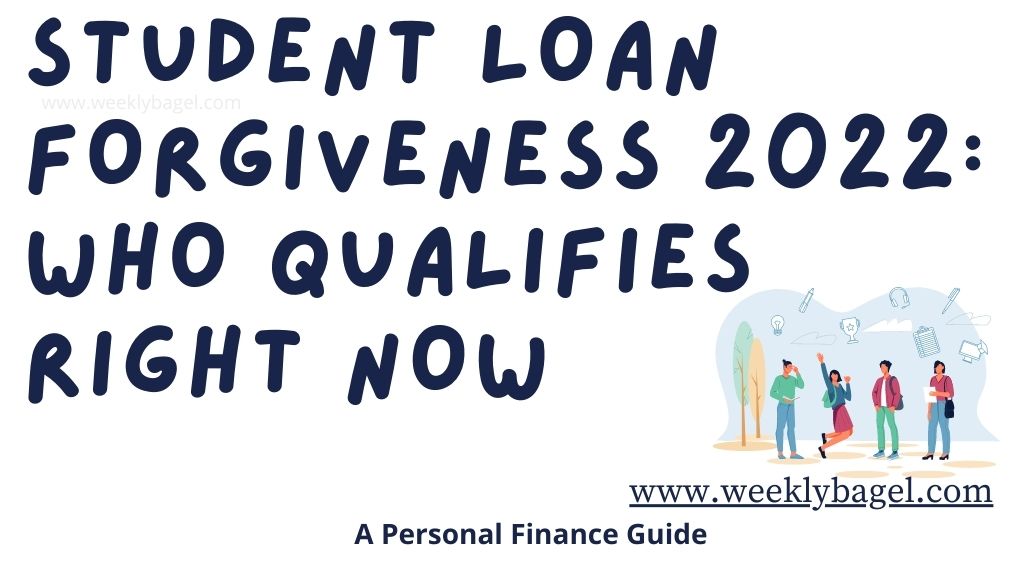Biden’s long awaited student loan forgiveness has a new series of proposals. This is great, because of its positive impact in the face of the rising inflation in the United States. Here is what you need to know about President Biden’s new student loan forgiveness proposal.

It is a three part student loan debt relief plan. The new student loan forgiveness aims at either eliminating student loan debt, or making it quite easy to pay student loans. Recently, President Biden announced three ways of ending the student debt crisis, as a way of extending the life of the previous stimulus student loan forgiveness.
Namely:
- Debt Cancellation
- Forbearance
- A new income-driven repayment Favorable to borrowers
What Biden’s Announcement Mean For Student Loan Debt
Here are what you need to know about the update on student loan forgiveness.
1. Debt Cancellation
The new update mentions a student debt cancellation of up to $20, 000 for student borrowers. This amount limits to only Pell Grant borrowers. However, non-Pell Grant borrowers can qualify up to $10,000.
So, who benefits from the $10,000 student loan forgiveness?
All other federal student loan borrowers, although there is an income threshold for the student loan forgiveness. The student loan debt forgiveness application opens to income earners of less than $125,000. This is because Biden’s administration wants to prevent low income earners’ monthly income from being tied down by debt repayment.
According to the White House,
The Middle class suffers the brunt of the cumulative federal student loan debt—$1.6 trillion. This debt has prevented a great majority from home acquisition, business startups and retirement fund contributions.
Whitehouse.gov
Also, a study by the White House government finds 16% of borrowers are in loan default. Thus, making this new debt cancellation plan a necessity for many borrowers.
But, why do Pell Grant recipients get more in debt cancellation than non-Pell Grant borrowers?
A 2019 – 2020 income study by White House government, shows Pell Grant borrowers are from households with annual income of $60,000 or less. Here is a breakdown of borrowers and household income.
| Income | Percentage of Student Debt |
|---|---|
| $60,000 or more | 7% |
| $30,000 to $60,000 | 28% |
| $30,000 or less | 66% |
As you can see from the statistics above, Pell Grant borrowers represent majority of student loan borrowers. Hence, why the Biden administration wants to cancel $10,000 more debt for Pell Grant borrowers, than the rest of other borrowers’ population.
2. A New Income-Driven Repayment Plan (IDR)
A new income-driven repayment plan is one of the three-part plan. It aims at helping current and future borrowers pay their student debt without stress. This is what you need to know about it.
Firstly, monthly repayment for undergraduate borrowers is to be cut by 50%. According to Biden’s administration, the goal is to help future college graduates who will earn low income. Here is what I mean.
Let us say you graduate with a student debt of $30,000. If your monthly income is $4000 monthly and your monthly repayment prior to this new plan is $600, then your new monthly payment in this new plan will be $300. Therefore, saving you $300 every month.
It is great, is it not?
Well, this is not the best part of this new income-driven plan. The Biden’s administration wants to hold institutions responsible for any unreasonable tuition hikes. This is aimed at protecting current and future student loan borrowers.
Honestly, I cannot wait for this one. You have no idea what medical students pay for medical school right now. The student loan forgiveness programs for medical schools are not available for all medical school graduates. The current debt is insane!
Secondly, the new income-driven repayment plan will be less than 5% of your monthly income. This is great, for college graduates with low monthly income. Don’t you agree, my good reader?
Finally, the new income-driven plan includes an automatic loan forgiveness after 10 years of loan repayment. The current loan repayment forgives your loan after 20 years of consistent loan repayment. But, this new plan will reduce it to 10 years making it easy for graduates to be debt-free within the time frame.
3. A New Loan Forbearance Plan
If you have made payment towards your student loans within the past three years, you will observe loan payments had been deferred as part of the COVID-19 stimulus package. It started on March 2020. The student loan relief extension has been going on for three years now.
President Biden has mentioned additional pause on repayment as part of his administration’s three loan relief strategies. This is until December 31st 2022. The goal on this payment pause, is to ensure borrowers organize themselves to avoid defaults.
Repayment is expected to start again on January 2023. This is considered the final extension to loan repayment. I recommend you get your finances in order, so as to be prepared to start paying on your student debt in January 2023.
Who Is Eligible For Student Loan Forgiveness
You may not be eligible for Biden’s $20,000 student loan relief. It does not mean you will not qualify for any of the other student loans stimulus forgiveness. Here is the eligibility for student loan forgiveness in 2022.
| Borrower | Household Income | Eligibility |
|---|---|---|
| Individual | $125,000 or less | Eligible |
| Married or Heads of Households | $250,000 or less | Eligible |
| Pell Grant Borrowers | Meeting either of the above income limits | Up to $20,000 |
| Non-Pell Grant Borrowers | Meeting either of the above income restrictions | Up to $10,000 |
From the above, you can see the income limits for Biden’s debt forgiveness program. The borrowers above are eligible for the three-part plan. If you are making more than $125,000 as an individual, you are not eligible. The same goes for married or heads of households making more than $250,000 annually.
Deadline For Student Loan Forgiveness
You can start the student loan forgiveness 2022 application now. You are expected to apply, before the loan repayment deferment expires on December 31st 2022. This is to get the debt relief, before the expiration date.
It is recommended you apply before November 15th 2022. This is an ample time before the loan deferment expiration date. Well, when will student loan forgiveness show up?
It will take 4 to 6 weeks for your student debt to be forgiven. Do not worry though. The Department of Education will continue to process application after November 15th.
Finally, the Department of Education wants you to subscribe to its subscription page so as to be notified when the application opens. Subscribe with your email address. It will let you know when to apply and where to send your application.
Impact Of the Loan Forgiveness Plan
As long as I have been alive, this is by far the best thing to ever happen to current and future student loan borrowers. This is because a majority of them spend more than half of their lives repaying their student debts. This is especially those who went for expensive schools and majors.
In fact, the White House fact sheet says about 90% of debt cancellation benefits borrowers making less than $75,000 a year. This is important, since 66% of pell grant borrowers come from a household making $30,000 or less. What does this mean for low income earners who had borrowed to go to college, my dear reader?
Economic empowerment.
Yes- economic empowerment will be the result of this new student loan forgiveness plan. This is because student debtors will now have cash available to buy homes, start businesses and contribute to their retirement funds. Not only these three, but also they will be less inclined to borrow as a result of money going into their savings instead of debt repayment.
To be sincerely, I am excited about this new development. I benefited from the student loan relief plan during the first year of Covid-19 pandemic. Given the inflation currently raging in our country, I expect Biden’s new student loan forgiveness plan to change the lives of many a graduate.




 Where To Cash Checks For Free
Where To Cash Checks For Free